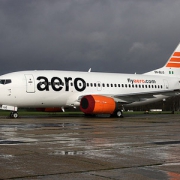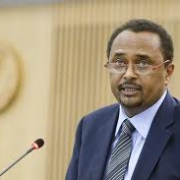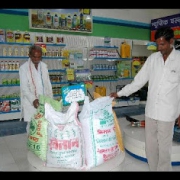The Advent of Mobile Finanical Services in Agriculture
 As the global population continues to grow – it is expected to reach more than 9 billion by 2050. It will require a 70% increase in food production above current levels. Most of this increased yield will have to be achieved in less developed countries (LDCs), many of whose farmers operate on a small scale and are highly exposed to crop failure and adverse commodity price movements. This month, Vodafone, Accenture and Oxfam released a report on mAgriculture. The report titled “Connected Agriculture” assesses the potential benefits of new mobile data services such as mobile financial services, weather forecasts, and agriculture information and advice for smallholding farmers operating in marginal circumstances.
As the global population continues to grow – it is expected to reach more than 9 billion by 2050. It will require a 70% increase in food production above current levels. Most of this increased yield will have to be achieved in less developed countries (LDCs), many of whose farmers operate on a small scale and are highly exposed to crop failure and adverse commodity price movements. This month, Vodafone, Accenture and Oxfam released a report on mAgriculture. The report titled “Connected Agriculture” assesses the potential benefits of new mobile data services such as mobile financial services, weather forecasts, and agriculture information and advice for smallholding farmers operating in marginal circumstances.
Additionally, in light of market saturation, MNOs face the task of growing average revenue per user (ARPU) and market share in rural areas. Agricultural Value Added Services (Agri VAS) present a considerable business opportunity due to the enormous potential user base in LDCs. The farming sector in these countries often suffers from chronically low productivity. Lack of information acts upon productivity and income levels like a glass ceiling. However, with increasing teledensity in the developing world – Africa is being tipped to pass one billion mobile subscriptions and become the world’s second largest mobile market by 2016, mobiles are uniquely positioned to address the information and financial needs of farmers – an intervention that can help increase their incomes, yields and economic wellbeing. Vodafone’s research indicates potential $138 billion addition to developing world farmers’ incomes by 2020
The financial and information opportunities at the base of the pyramid (BOP) in themselves hold significant untapped value for the private sector. The BOP has both intricate financial and information needs, which have the potential to be met through mobile money and information-based mobile services. Mobile Money can reduce the financial gap for farmers by giving them access to savings and insurance, which in itself reduces the impact of extreme weather and allows for greater investment in improving production.[1] Meanwhile, m-information services have the potential to open up significant markets opportunities, by relaying sales prices, GIS-based commodity demand information, as well as more basic yet essential information on agricultural best practices and reliable weather forecasts.
While there are existing agricultural information services provided via traditional channels such as radio and television, government extension services as they are usually referred to can be made much more efficient by leveraging the mobile channel. This can help improve their quality and trust amongst user communities increasing their potential for scale. In addition, by linking to them to mobile financial services, farmers will not only improve their productivity but will also be empowered to make better investment and risk management decisions (e.g. request credit for new fertilizers or other inputs they need to grow more and better crops). These benefits are also likely to extend to the wider community as increased agricultural income helps rural families afford education, healthcare and other services.
The GSMA mAgri Programme
The Development Fund’s mAgri Programme was set up in 2009 to accelerate the development, provision and adoption of mobile solutions to benefit the agriculture sector in emerging markets. In June 2011, the programme announced the second phase of their mobile agricultural programme, the introduction of the mFarmer Initiative, a partnership between GSMA, USAID and the Bill and Melinda Gates Foundation. The scope of the mFarmer Initiative is to support mobile phone operators and agricultural partners in launching commercially viable mobile information services that bridge the information gap and increase the productivity and income of rural small-holders. It aims to attract 2 million of the worlds’ poorest farmers to become users of mFarmer Services by 2013. This compliments their previous work on mobile agricultural services in India and Kenya.
The team has recently launched the Agri VAS Market Entry Toolkit which explores the opportunities for Agricultural VAS and covers emerging best practice on marketing, service design and business modelling. It is primarily addressed to Mobile Network Operators (MNOs), other service providers, and agricultural organisations that are looking to partner and launch Agri VAS.
Just as the successful provision of mobile financial services for the BOP requires innovative partnership models; Agri VAS will require similar efforts from the part of its stakeholders. While MNOs have a leading role to play, they will need the collective support and partnerships from key stakeholders in the agricultural supply chain in order to fully unlock the benefits for farmers in LDCs.







































